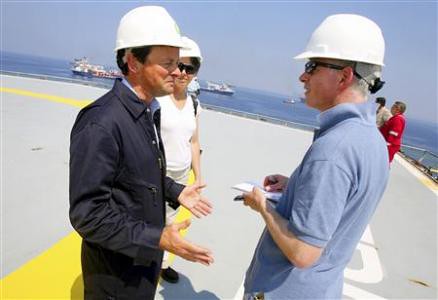
Like getting in touch with nature? Then there’s nothing like hiking and camping in the wilderness.
I’ve been a scout since I was 6 years old — same for my wife and children. Many of my closest friends I met during my association with Plast, the Ukrainian National Scouting Organization, but almost entirely through the U.S. division. And they’ve been my friends for thirty years or more. I remain active via fraternal groups and as a counselor to a troop of younger boys in Passaic, N.J., the equivalent of cub scouts in BSA.
Before we were blessed with children, we’d hike the northern Catskills together. I missed those days. Well, not any more. When I heard they needed a leader at the camp in North Collins, N.Y., I thought about it and decided to volunteer my services. So for the first three weeks in July, I’ll be leading a team of seven counselors and a group of 39 scouts, aged 12-17. And sleeping in a tent.
We’ll do some hiking, too. And raft down the Genesee River in Letchworth State Park. Plenty of bonfires — what I like to call “the fire channel.” No TV for entertainment — except for the World Cup final on the 11th.
Hopefully, we’ll create the kind of lasting memories the kids will hold on to for years to come.
0

Cute, right? That’s the view from the top of the BP building in West Houston, Texas. What’s it like in there? Read this Reuters piece by Tom Bergin, “Special Report: Inside BP’s War Room.” I found it a compelling read…
The room they worked in measured about 30 feet by 30 feet and is normally used for training sessions. BP’s crisis unit had commandeered it and renamed it the “intervention room” soon after the leak began. Cables wrapped in yellow tape with the word “warning” written on it, snaked from the ceiling to the cheap, white laminated tables, which were crammed with laptops. Maps of the Gulf and diagrams of the equipment on the seabed covered the thin walls.
Next door, in an almost identical space called the “containment room”, a separate group of engineers worked on strategies to capture the oil that had already leaked.
The team in the intervention room pored over the results of tests to see if the well could take the pressure. The mood was “intense”, BP’s director for the Americas Bob Dudley told Reuters in the narrow, artificially-lit corridor outside the room during a break in deliberations. “It’s kind of like NASA and the Apollo 13 mission in there.”
The uber-calm Dudley isn’t normally given to hyperbole. He was formerly the head of TNK-BP, the British firm’s joint venture with a group of Russian oligarchs, until the billionaires turned hostile and Dudley was forced to flee the country. He talks about that experience with the emotion of an oil man discussing his wife’s choice of make-up. In Houston that afternoon, though, there was a flicker of tension in his eyes.
“It’s pretty dramatic,” he said.

BP CEO Tony Hayward (L) speaks with Reuters journalist Tom Bergin (R) aboard the Discover Enterprise drill ship in the Gulf of Mexico, 55 miles (89 km) south of Venice, Louisiana May 28, 2010. Credit: REUTERS/Sean Gardner
This story is a living, breathing “crisis communications” case study that will be a lesson for students and practioners for years to come, just as Love Canal did in the 1970’s.
Lots of players involved here, too. Even those on the periphery, such as The Nature Conservancy, which felt a need to communicate directly with its various publics about its relationship with BP. Good job.
0


